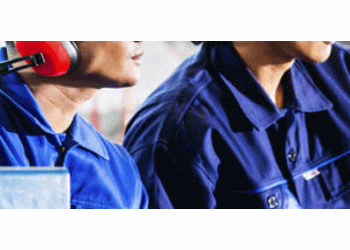Air fin heat exchanger Texas City Texas
Air fin heat exchanger Texas City Texas
 Dry ice-blasting is a form of carbon dioxide cleaning, where dry ice, the solid form of carbon dioxide, is accelerated in a pressurized air stream and directed at a surface in order to clean it. An alternative media for non-abrasive blasting is water-ice, known as ice blasting. Air fin heat exchanger Texas City Texas
Dry ice-blasting is a form of carbon dioxide cleaning, where dry ice, the solid form of carbon dioxide, is accelerated in a pressurized air stream and directed at a surface in order to clean it. An alternative media for non-abrasive blasting is water-ice, known as ice blasting. Air fin heat exchanger Texas City Texas
The method is similar to other forms of abrasive blasting such as sandblasting, plastic bead blasting, or soda blasting substituted for dry ice as the blasting medium. Dry-ice blasting leaves no chemical residue as dry ice sublimates at room temperature. Air fin heat exchanger Texas City Texas
Dry-ice blasting involves propelling pellets at extremely high speeds. The actual dry-ice pellets are quite soft and much less dense than other media used in blast-cleaning (i.e. sand or plastic pellets). Upon impact, the pellet sublimates almost immediately, transferring minimal kinetic energy to the surface on impact and producing minimal abrasion.
The sublimation process absorbs a large volume of heat from the surface, producing shear stresses due to thermal shock.[1]
This is assumed to improve cleaning as the top layer of dirt or contaminant expected to transfer more heat than the underlying substrate and flake off more easily.
The efficiency and effectiveness of this process depend on the thermal conductivity of the substrate and contaminant.
The rapid change in state from solid to gas also causes microscopic shock waves, which also thought to assist in removing the contaminant. Dry Ice Blasting is nonabrasive, nonconductive and nonflammable.
Dry Ice Blasting generates no additional waste or secondary contamination unlike media and water blasting Air fin heat exchanger Texas City Texas
Equipment Air fan heat exchanger Texas City Texas
The ice used can be in solid pellet form or shaved from a larger block of ice. The shaved ice block produces a less dense ice medium and is more delicate than the solid pellet system. Air fin heat exchanger Texas City Texas
Dry-ice blasting technology can trace its roots to conventional abrasive blasting. The differences between an abrasive-blasting machine and a dry-ice blasting machine are in how they handle the blast media. Unlike sand or other media, dry ice is generally used at its sublimation temperature. Air fin heat exchanger Texas City Texas

This means that a pressurized hopper system could potentially build up to dangerous amounts of pressure (see dry ice bomb). Other differences include systems for preventing the ice from forming snowball-like jams, and different materials to allow operation at very low temperatures. Air fin heat exchanger Texas City Texas
Two-hose dry-ice blasting developed before the single-hose system. This approach is very similar to a suction-feed abrasive blast system. Compressed air delivered in one hose, and ice pellets are sucked out of a second hose by the venturi effect. Compared to a single-hose system, the two-hose system delivers ice particles less forcefully (approximately 5% for a given air supply). For a given amount of compressed air, two-hose systems can have less vertical distance between the machine and applicator. Air fin heat exchanger Texas City Texas
For most systems available today this limit is well in excess of 25 feet. Two-hose systems are generally cheaper to produce due to a simpler delivery system. These systems rarely seen today as they are less efficient in most applications. Their principal advantage in allowing finer particles of ice to delivered to the applicator as the late combination of warm air with cold ice results in less sublimation in the hose. These systems allow for more delicate surfaces to be cleaned such as in semiconductor. Air fin heat exchanger Texas City Texas
Single-hose technology was developed by Cold Jet, LLC in 1986, and uses a single hose to deliver air blasts and dry ice. Single-hose dry-ice blasters share many of the advantages of single-hose abrasive-blast systems. To avoid the potential dangers of a pressurized hopper, single-hose dry-ice blasters make use of a quickly cycling airlock. Air fin heat exchanger Texas City Texas. The single-hose system can use a longer hose than its double-hose counterpart without a significant drop in pressure when the ice leaves the hose. The additional power comes at the cost of increased complexity. Single-hose systems used where more aggressive cleaning an advantage. This allows heavier build-up to cleaned and allows moderate buildup to be cleaned faster.Air fin heat exchanger Texas City Texas
Uses Air fan heat exchanger Texas City Texas

Dry-ice blasting used to clean bakery equipment Air fan heat exchanger Texas City Texas
Air fan heat exchanger Texas City Texas Dry-ice blasting canbe used to clean food processing equipment to effectively decontaminate surfaces of Salmonella enteritidis, E. coli, and Listeria monocytogenessuch that these microorganisms not detectable using conventional microbiological methods.[4] It may also be used to clean some equipment without disassembly and without producing fire or electrical hazards. Air fin heat exchanger Texas City Texas. The EPA recommends dry ice blasting as an alternative to many types of solvent-based cleaning. Dry ice blasting can clean numerous objects with differing, complex geometries at once. Due to the blast media sublimating without residue dry ice blasting finds use in the semiconductor and aerospace industries. Air fin heat exchanger Texas City Texas
Air fan heat exchanger Texas City Texas Dry ice sometimes referred to as “cardice” (chiefly by British chemists), is the solid form of carbon dioxide. It used primarily as a cooling agent. Its advantages include lower temperature than that of water ice and not leaving any residue (other than incidental frost from moisture in the atmosphere). It is useful for preserving frozen foods where mechanical cooling is unavailable. Air fin heat exchanger Texas City Texas
Dry ice sublimates at 194.65 K (−78.5 °C; −109.3 °F), at Earth atmospheric pressures. This extreme cold makes the solid dangerous to handle without protection due to burns caused by freezing (frostbite). While generally not very toxic, the outgassing from it can cause hypercapnia (abnormally elevated carbon dioxide levels in the blood) due to buildup in confined locations. Air fin heat exchanger Texas City Texas

Dry ice blasting a form of carbon dioxide cleaning, where dry ice, the solid form of carbon dioxide, accelerated in a pressurized air stream and directed at a surface in order to clean it. An alternative media for non-abrasive blasting is water-ice, known as ice blasting. Air fin heat exchanger Texas City Texas
The method is similar to other forms of abrasive blasting such as sandblasting, plastic bead blasting, or soda blasting substituted for dry ice as the blasting medium. Dry-ice blasting leaves no chemical residue as dry ice sublimates at room temperature. Air fin heat exchanger Texas City Texas
Safety Air fan heat exchanger Texas City Texas
Carbon dioxide increasingly toxic starting at concentrations above 1%, Air fan heat exchanger Texas City Texas and can also displace oxygen resulting in asphyxia if the equipment not used in a ventilated area. In addition, because carbon dioxide heavier than air, exhaust vents required to at or near ground level to efficiently remove the gas. At normal pressure, dry ice −78 °C (−108 °F) and must handled with insulated gloves. Air fin heat exchanger Texas City Texas. Eye and ear protection required to safely use dry ice cleaning equipment.
Compared to other blasting-cleaning methods, dry ice blasting produces fewer waste products.
And does not require clean-up of a blasting medium.
The waste products can swept up, vacuumed or washed away depending on the containment. Air fin heat exchanger Texas City Texas
Call Now:+1-856-678-4004
envirotec@tiplus.com
(Texas City, Texas) (Baton Rouge, Louisiana)
Nueva Orleans• Baton Rouge• Shreveport• Lafayette• Lake Charles• Kenner• Bossier City• Monroe• Alexandria• Houma• Nueva Iberia• Slidell• Ruston• Sulphur• Hammond• Natchitoches• Gretna• Chalmette• Opelousas• Zachary• Thibodaux• Pineville• Baker• Crowley• Minden• West Monroe• Morgan City• Abbeville• Bogalusa• Mandeville• Bastrop• DeRidder• Eunice• Jennings• Denham Springs• Gonzales• Harahan • Houston• San Antonio• Dallas• Austin• Fort Worth• El Paso• Arlington• Corpus Christi• Plano• Laredo• Lubbock• Garland• Irving• Amarillo• Grand Prairie• Brownsville• Pasadena• Mesquite• McKinney• McAllen• Killeen• Waco• Carrollton• Beaumont• Abilene• Frisco• Denton• Midland• Wichita Falls• Odessa• Round Rock• Richardson• Tyler• Lewisville• College Station• San Angelo• Pearland• Texas City Texas

